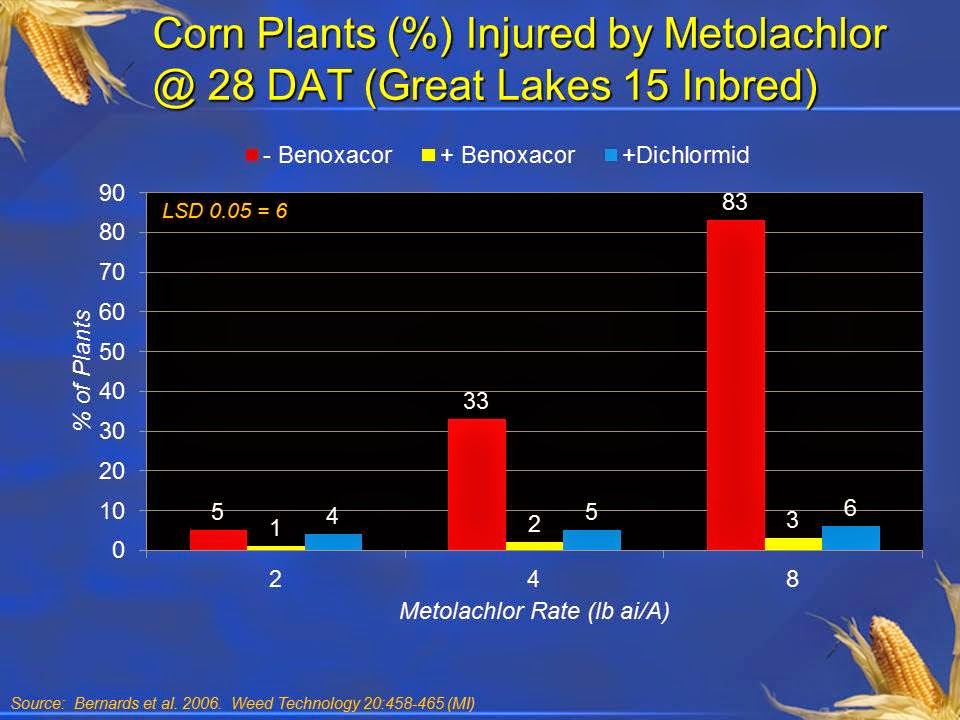Dr. Prostko has provided the information below about corn weed control during this wet and rainy period:
The rainy weather this week has delayed many postemergence herbicide applications in field corn. Consequently, growers will be forced to make some tough decisions when the weather clears. Here are a few things to consider:
1) Refer to the 2015 UGA Pest Management Handbook pages 161-183 for information about the latest stage of growth that herbicides can be applied in field corn. A stage of growth or height restriction is listed for every POST herbicide. The label is the LAW regarding POST herbicide applications.
2) Results from 1 field trial conducted in 2014 in a high input environment with Roundup + Atrazine would suggest that there might be some yield problems if applied over-the-top after the V7 stage of growth (Figure 1). This research is being repeated in 2015. Growers with corn fields in the V7 stage or later should strongly consider using a lay-by rig with this treatment.
 |
| Figure 1. Field corn yield response to Roundup + Atrazine applied at various stages of growth in Georgia, 2014. |
3) Do not use days after planting (DAP) as method to determine corn stage of growth or when herbicides can or cannot be applied. Generally in south Georgia, more GDD’s have been accumulated in 2015 than in 2013 and 2014. During the period from March 1 to April 16, 2015 (Tifton), 717 GDD’s have been accumulated. Only 375 and 430 GDD’s were accumulated during this same time period in 2013 and 2014, respectively.
4) Growers who have used residual herbicides such as Dual, Warrant, or Zidua should be on the lookout for crop injury (Figure 2). Injury from these herbicides is more likely to occur during cool, wet weather conditions. Injury is also influenced by hybrid and rate. Some formulations of metolachlor contain a crop safener such as benoxacor or dichlormid (i.e. Brawl II, Dual II Magnum, Me-To-Lachlor II, Parallel, Stalwart C). Benoxacor and dichlormid will significantly improve the tolerance of corn to metolachlor but it will not completely eliminate all injury (Figure 3).
 |
| Figure 2. Field corn injury caused by Dual. |
%2BInjured%2Bby%2BMetolachlor%2B%40%2B28.jpg) |
